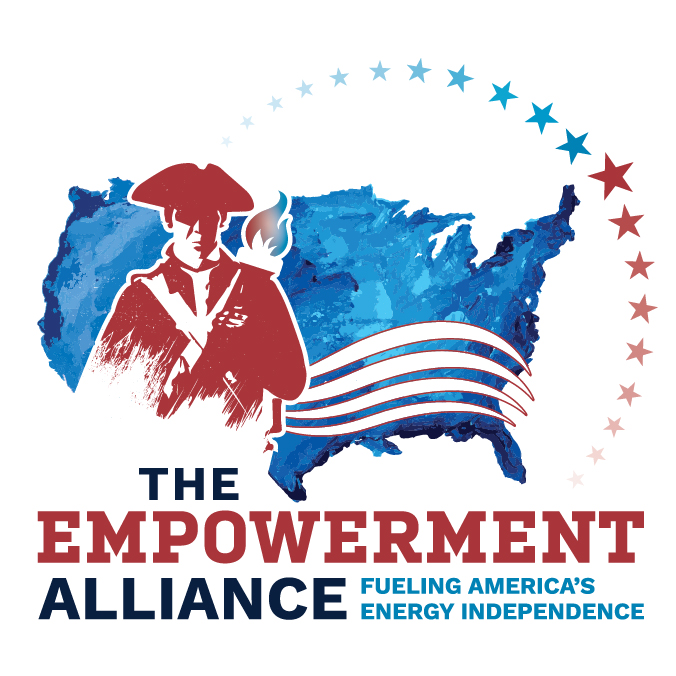Learn

RESEARCH & DATA
TEA Memo – GND Plan and Background
overview
Executive Summary
The Green New Deal was introduced as a non-binding resolution with few specifics and no path to forming any true policy measures. However, there is dangerous potential in its very vagueness.
The wide-ranging and broad proposals in it not only call for a completely untested and potentially disastrous overhaul of U.S. energy but also for controversial and potentially costly social programs like universal health care and jobs guarantees. As a result, the proposal is even opposed by constituencies like labor unions who fear devastating job losses from the open-ended plan.
Key Points
- The Green New Deal Was Introduced In February 2019 And Failed In The Only Congressional Vote Held So Far: In February 2019, Rep. Alexandria Ocasio-Cortez (D-NY) and Sen. Ed Markey (D-MA) released their proposal call the “Green New Deal.” In March 2019, the Green New Deal was rejected 57-0 in the U.S. Senate in the only vote held on the proposal so far.
- “A Nonbinding Plan To Make A Plan”: The Green New Deal is not a bill, but a non-binding resolution, which if passed would not create any specific policies or programs. The Atlantic called it, “A nonbinding plan to make a plan … authorizing no new programs in any useful detail.”
- A Dangerously Vague Plan That Not Only Calls For An Shift On Energy, But Also Vast And Costly Social Programs: The Green New Deal calls for a “10-year national mobilization” for a shift away from fossil fuels, as well as calling for national health care coverage and job guarantees.
- Opposed By Labor Unions Who Fear It Will Kill Jobs: Labor unions have withheld support for fear the loosely-defined plan could kill jobs. The AFL-CIO opposed the Green New Deal and called it “not achievable or realistic.” Pena O’Sullivan of the Laborers’ International Union of North America said, “We will never settle for ‘just transition’ language as a solution to the job losses that will surely come from some of the policies in the resolution.”
Legislative Background
In February 2019, The Green New Deal Was Introduced By Rep. Alexandria Ocasio-Cortez (D-NY) And Sen. Ed Markey (D-MA)
In February 2019, Rep. Alexandria Ocasio-Cortez (D-NY) and Sen. Ed Markey (D-MA) released their proposal call the “Green New Deal.” “Rep. Alexandria Ocasio-Cortez (D-N.Y.) and Sen. Ed Markey (D-Mass.) will release a blueprint for a Green New Deal on Thursday urging a ‘10-year national mobilization’ for a speedy shift away from fossil fuels and calling for national health care coverage and job guarantees in a sweeping bid to remake the U.S. economy.” (Zack Colman, “Green New Deal Resolution Calls For ‘National Mobilization’ On Climate, Economy,” Politico, 2/7/19; H.Res.109 – Recognizing the duty of the Federal Government to create a Green New Deal, Introduced 2/7/19)
In March 2019, The Green New Deal Was Overwhelmingly Rejected In The Only Vote Held On The Proposal So Far
In March 2019, the Green New Deal was rejected 57-0 in the U.S. Senate in the only vote held on the proposal so far. “The Senate rejected the Green New Deal on Tuesday, in a decisive 57–0 vote that Democrats decried as a political stunt meant to divide their caucus. All the Republican senators opposed the measure. They were joined by four senators who caucus with the Democrats—Senator Joe Manchin, from the coal-heavy state of West Virginia, along with Senators Kyrsten Sinema of Arizona, Doug Jones of Alabama, and Angus King of Maine.” (Robinson Meyer, “The 3 Democrats Who Voted Against the Green New Deal,” The Atlantic, 3/26/19; Roll Call Vote 52, Motion to Invoke Cloture on the Motion to Proceed to S.J. Res. 8, U.S. Senate, Failed 0-57-43, 3/26/19)
THE GREEN NEW DEAL: “a nonbinding plan to make a plaN”
The Green New Deal Is Not A Bill, But A Resolution—”A Nonbinding Plan To Make A Plan … Authorizing No New Programs In Any Useful Detail”
The Green New Deal is not a bill, but a non-binding resolution, which if passed would not create any specific policies or programs. “Importantly, it’s a nonbinding resolution, meaning that even if it were to pass (more on the challenges to that below), it wouldn’t itself create any new programs. Instead, it would potentially affirm the sense of the House that these things should be done in the coming years. Lawmakers pass nonbinding resolutions for things as simple as congratulating Super Bowl winners, as well as to send political messages — for example, telling the president they disapprove of his trade policies, as the Senate did in summer 2018.” (Danielle Kurtzleben, “Rep. Alexandria Ocasio-Cortez Releases Green New Deal Outline, NPR, 2/7/19; H.Res.109 – Recognizing the duty of the Federal Government to create a Green New Deal; H.Res.109 – Recognizing the duty of the Federal Government to create a Green New Deal, Introduced 2/7/19)
FactCheck.Org: “Unlike a bill, this type of legislation is not presented to the president and cannot become law. Even if the Green New Deal passed in one or both chambers of Congress, separate legislation would have to be introduced to make any of the resolution’s goals a reality.” “On Feb. 7, New York Rep. Alexandria Ocasio-Cortez introduced her Green New Deal in the House and Sen. Ed Markey of Massachusetts introduced a companion resolution in the Senate. The text of the legislation, which is a nonbinding resolution, lays out a broad vision for how the country might tackle climate change over the next decade, while creating high-paying jobs and protecting vulnerable communities. Unlike a bill, this type of legislation is not presented to the president and cannot become law. Even if the Green New Deal passed in one or both chambers of Congress, separate legislation would have to be introduced to make any of the resolution’s goals a reality.” (Jessica McDonald, “The Facts on the ‘Green New Deal’,” FactCheck.Org, 2/15/19)
FactCheck.Org: “The resolution goes on to propose additional aims and projects to accomplish these overarching goals, but generally does not stipulate how the country will reach them. The resolution is also silent on cost and funding mechanisms.” “The primary climate change goal is to reach net-zero greenhouse emissions in a decade. ‘Net-zero’ means that after tallying up all the greenhouse gases that are released and subtracting those that are sequestered, or removed, there is no net addition to the atmosphere. The goal, then, is slightly less ambitious than calling for no greenhouse gas emissions at all. In October, the Intergovernmental Panel on Climate Change concluded in a special report that in order to limit warming to 1.5 degrees Celsius above pre-industrial levels — and thereby avoid many climate change impacts — the world would have to reach net-zero emissions of carbon dioxide by the year 2050. The resolution goes on to propose additional aims and projects to accomplish these overarching goals, but generally does not stipulate how the country will reach them. The resolution is also silent on cost and funding mechanisms.” (Jessica McDonald, “The Facts on the ‘Green New Deal’,” FactCheck.Org, 2/15/19)
The Atlantic: “And even its successful passage may not have meant much. The Green New Deal, as it stands today, is a nonbinding plan to make a plan.” (Robinson Meyer, “The 3 Democrats Who Voted Against the Green New Deal,” The Atlantic, 3/26/19)
The Atlantic: “While its supporters envision a Herculean effort to remake the economy while fighting climate change, its current text is extremely vague, authorizing no new programs in any useful detail.” (Robinson Meyer, “The 3 Democrats Who Voted Against the Green New Deal,” The Atlantic, 3/26/19)
The Green New Deal Calls For A “10-Year National Mobilization” For A Shift Away From Fossil Fuels And For National Health Care Coverage And Jobs Guarantees
The Green New Deal calls for a “10-year national mobilization” for a shift away from fossil fuels, as well as calling for broad social programs like national health care coverage and job guarantees. “Rep. Alexandria Ocasio-Cortez (D-N.Y.) and Sen. Ed Markey (D-Mass.) will release a blueprint for a Green New Deal on Thursday urging a ‘10-year national mobilization’ for a speedy shift away from fossil fuels and calling for national health care coverage and job guarantees in a sweeping bid to remake the U.S. economy.” (Zack Colman, “Green New Deal Resolution Calls For ‘National Mobilization’ On Climate, Economy,” Politico, 2/7/19)
The Green New Deal seeks to transition the U.S. to 100 percent clean energy in 10 years. “As POLITICO previously reported, the plan seeks to transition the U.S. to a 100 percent clean energy system without specifically calling for an end to fossil fuels, stating that it aims for ‘net-zero greenhouse gas emissions through a fair and just transition for all communities and workers.’ It also calls for creating ‘millions of good, high-wage jobs’ and pledges ‘to promote justice and equity’ across all communities within 10 years.” (Zack Colman, “Green New Deal Resolution Calls For ‘National Mobilization’ On Climate, Economy,” Politico, 2/7/19)
The Green New Deal calls for significant reductions in fossil fuel pollution and greenhouse gas emissions in agriculture and transportation. “The resolution advocates for eliminating fossil fuels pollution and greenhouse gas emissions ‘as much as technologically feasible’ in agriculture and transportation, two of the major sources of climate change gases.” (Zack Colman, “Green New Deal Resolution Calls For ‘National Mobilization’ On Climate, Economy,” Politico, 2/7/19)
The Green New Deal Calls for “clean, renewable, and zero-emission sources” to power the U.S. electric system. “Under the plan, the electricity system would run entirely on ‘clean, renewable, and zero-emission sources,’ the resolution states. It envisions new investments in public transportation, improving building energy efficiency, clean manufacturing and green infrastructure. Investments would prioritize communities that ‘may otherwise struggle with the transition away from greenhouse gas intensive industries’ while also ensuring room for ‘high-paying union jobs’ that include prevailing wages and protect collective bargaining rights. It also pushes to ‘stop the transfer of jobs and pollution overseas.’” (Zack Colman, “Green New Deal Resolution Calls For ‘National Mobilization’ On Climate, Economy,” Politico, 2/7/19)
The Green New Deal Also Calls For New Investments In Public Transportation And Infrastructure
The Green New Deal also calls for “new investments in public transportation, improving building energy efficiency, clean manufacturing and green infrastructure.” “Under the plan, the electricity system would run entirely on ‘clean, renewable, and zero-emission sources,’ the resolution states. It envisions new investments in public transportation, improving building energy efficiency, clean manufacturing and green infrastructure. Investments would prioritize communities that ‘may otherwise struggle with the transition away from greenhouse gas intensive industries’ while also ensuring room for ‘high-paying union jobs’ that include prevailing wages and protect collective bargaining rights. It also pushes to ‘stop the transfer of jobs and pollution overseas.’” (Zack Colman, “Green New Deal Resolution Calls For ‘National Mobilization’ On Climate, Economy,” Politico, 2/7/19)
The Green New Deal framework also includes “lofty goals” including upgrading all existing buildings for energy efficiency, guaranteed jobs, and high-quality health care for all Americans. “In addition, the framework, as described in the legislation as well as ‘FAQs’ from Ocasio-Cortez’s office, calls for a variety of other lofty goals: ‘upgrading all existing buildings’ in the country for energy efficiency; working with farmers ‘to eliminate pollution and greenhouse gas emissions… as much as is technologically feasible’ (while supporting family farms and promoting ‘universal access to healthy food’); ‘Overhauling transportation systems’ to reduce emissions — including expanding electric car manufacturing, building ‘charging stations everywhere,’ and expanding high-speed rail to ‘a scale where air travel stops becoming necessary’; A guaranteed job ‘with a family-sustaining wage, adequate family and medical leave, paid vacations and retirement security’ for every American; ‘High-quality health care’ for all Americans.” (Danielle Kurtzleben, “Rep. Alexandria Ocasio-Cortez Releases Green New Deal Outline,” NPR, 2/7/19)
Opposition from Labor Unions
The Green New Deal Is Opposed By Labor Unions Who Fear It will Kill Jobs
“Labor unions say they are withholding support for a Green New Deal unveiled by Democrats last week to transition the American economy away from fossil fuels, arguing the loosely-defined plan could kill jobs if its architects aren’t careful.” (Valerie Volcovici, “Labor Unions Fear Democrats’ Green New Deal Poses Job Threat,” Reuters, 2/12/19)
The AFL-CIO opposes the Green New Deal and called it “not achievable or realistic.” “But the AFL-CIO throwing water on the plan complicates matters for Democrats who rely on labor support. Without the backing from unions or the business community, it will be a hard sell for Democrats to get it beyond grass-roots support. In their letter to Markey and Ocasio-Cortez, Roberts and Stephenson called the Green New Deal “not achievable or realistic.” They urged the lawmakers to include labor in conversations related to climate change, but said it shouldn’t impinge on other priorities such as infrastructure.” (Colby Itkowitz, “AFL-CIO Criticizes Green New Deal, Calling It ‘Not Achievable Or Realistic,” The Washington Post, 3/12/19)
Pena O’Sullivan, Executive Director of the Laborers’ International Union of North America (LIUNA): “We will never settle for ‘just transition’ language as a solution to the job losses that will surely come from some of the policies in the resolution.” “The resolution’s backers say the plan – once fully sketched out in the legislation – would create jobs in much the same way as President Franklin Roosevelt’s New Deal of the 1930s by putting Americans to work on transformative government-led projects. It also calls for a ‘just transition’ for current fossil fuel workers – from coal miners to pipeline workers – through guarantees of healthcare, jobs, and job training. Union officials told Reuters they were skeptical. ‘We will never settle for ‘just transition’ language as a solution to the job losses that will surely come from some of the policies in the resolution,’ said Yvette Pena O’Sullivan, executive director of the Laborers’ International Union of North America (LIUNA), whose members work in construction and other industries.” (Valerie Volcovici, “Labor Unions Fear Democrats’ Green New Deal Poses Job Threat,” Reuters, 2/12/19)
“Phil Smith, a spokesman for the United Mine Workers (UMWA), which represents workers in the coal industry, echoed the concerns. ‘We’ve heard words like ‘just transition’ before, but what does that really mean? Our members are worried about putting food on the table,’ he said.” (Valerie Volcovici, “Labor Unions Fear Democrats’ Green New Deal Poses Job Threat,” Reuters, 2/12/19)
Sean McGarvey, President of the North America’s Building Trades Unions, said his members are skeptical of “green job” promises: Those “working in the oil and gas sector can make a middle-class living, whereas renewable energy firms have been less generous.” “Sean McGarvey, president of the North America’s Building Trades Unions, representing construction workers across all sectors including energy, said his staff had been contacted by Markey’s office about the Green New Deal, but said his members are skeptical of ‘green job’ promises. Members “working in the oil and gas sector can make a middle-class living, whereas renewable energy firms have been less generous,” he said at a pipeline safety event last week.” (Valerie Volcovici, “Labor Unions Fear Democrats’ Green New Deal Poses Job Threat,” Reuters, 2/12/19)
“‘We will not stand by and allow threats to our members’ jobs and their families’ standard of living go unanswered,’ wrote Cecil Roberts, president of the United Mine Workers of America, and Lonnie Stephenson, president of the International Brotherhood of Electrical Workers.” “The AFL-CIO, the national arm for U.S. labor unions, offered a critical assessment of the Green New Deal, warning that the ambitious plan to combat climate change could adversely affect U.S. workers. In a letter to Sen. Edward J. Markey (D-Mass.) and Rep. Alexandria Ocasio-Cortez (D-N.Y.) last week, the lawmakers who introduced a resolution last month detailing the key components of their plan, the AFL-CIO said it could not support a proposal that did not address their concerns. ‘We will not stand by and allow threats to our members’ jobs and their families’ standard of living go unanswered,’ wrote Cecil Roberts, president of the United Mine Workers of America, and Lonnie Stephenson, president of the International Brotherhood of Electrical Workers.” (Colby Itkowitz, “AFL-CIO Criticizes Green New Deal, Calling It ‘Not Achievable Or Realistic,” The Washington Post, 3/12/19)




